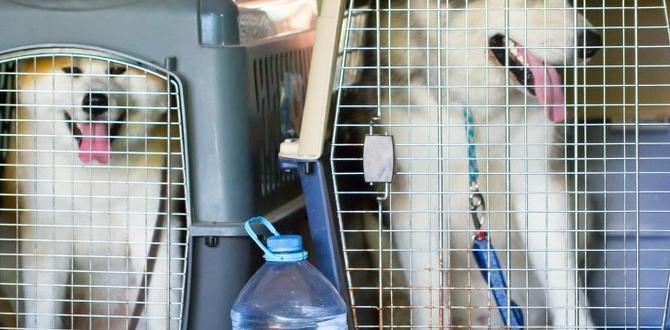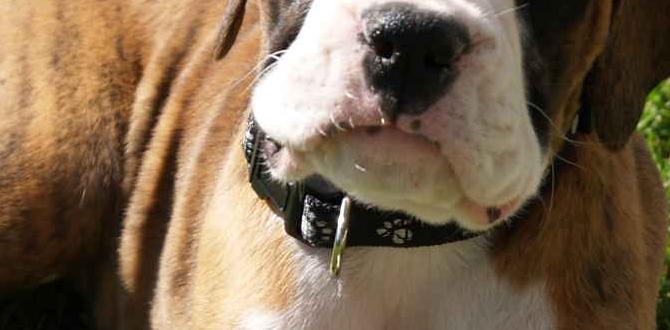Understanding and Addressing Dog Whining at Night: An Easy Step-by-Step Guide
Dog whining at night step by step can be a frustrating experience for both pets and their owners. That plaintive sound, slicing through the quiet darkness, can leave you wondering what’s wrong. Is your furry friend in pain? Lonely? Or perhaps just seeking attention? Thankfully, understanding the root cause of nighttime vocalizations is the first step towards finding a solution. This comprehensive guide will walk you through a clear, step-by-step process to nejen identify why your dog is whining, but also how to effectively address it, leading to more peaceful nights for everyone.

Identifying the Root Cause of Your Dog’s Nighttime Whining
Before you can implement a solution, you need to pinpoint the reason behind your dog’s distress. Nighttime whining isn’t usually an arbitrary behavior; it’s a form of communication. Here are the most common culprits:
Separation Anxiety: This is a prevalent cause, especially in younger dogs or those recently adopted. If your dog whines extensively when left alone, or at night when you’re in a different room, separation anxiety could be the issue. Signs include pacing, destructive behavior, excessive panting, and house soiling.
Medical Issues or Discomfort: Pain, illness, or even an aging dog experiencing cognitive decline can lead to whining. If the whining is a new behavior, accompanied by other symptoms like lethargy, loss of appetite, or changes in bathroom habits, a veterinary visit is crucial. Arthritis, gastrointestinal upset, or urinary tract infections are common examples.
Needs Not Met (Potty, Hunger, Thirst): A basic but often overlooked reason is that your dog genuinely needs to go outside to relieve themselves, is hungry, or thirsty. Ensure their water bowl is full and that they’ve had an adequate mealtime well before bed. A final potty break shortly before you retire for the night is also essential.
Environmental Factors: Loud noises, storms, or even unfamiliar surroundings can cause a dog to feel insecure and whine. If there have been recent changes in the household, such as a new pet, a family member leaving, or a move, this can also contribute to their unease.
Boredom or Lack of Stimulation: Dogs, especially intelligent and energetic breeds, need sufficient physical and mental exercise. If they haven’t had enough to do during the day, they might express their frustration and pent-up energy through whining at night.
Seeking Attention: Some dogs learn that whining is an effective way to gain your attention, even if it’s negative attention. If you respond quickly to every whine, you might be inadvertently reinforcing the behavior.
Step-by-Step Solutions for Addressing Dog Whining at Night
Once you have a better understanding of why your dog might be whining, you can start implementing targeted solutions.
Step 1: Rule Out Medical Concerns
As mentioned, your dog’s health is paramount. Before trying any behavioral modification techniques, schedule a visit with your veterinarian. Describe the whining behavior in detail, including when it started, how often it occurs, and any other symptoms you’ve observed. Your vet can perform a thorough examination and diagnostic tests to rule out any underlying medical issues or pain that might be causing the discomfort. Addressing physical needs is the first and most important step.
Step 2: Establish a Consistent Routine
Dogs thrive on predictability. A consistent daily routine can significantly reduce anxiety and confusion, leading to fewer nighttime vocalizations. This includes:
Feeding Schedule: Feed your dog at approximately the same times each day. Avoid large meals close to bedtime, as this can lead to digestive discomfort.
Potty Breaks: Ensure regular potty breaks throughout the day, with a final one just before you go to bed.
Exercise and Play: Dedicate time each day for physical activity and mental stimulation. A tired dog is a happy and quiet dog. This can include walks, fetch, puzzle toys, and training sessions.
Step 3: Address Separation Anxiety (If Applicable)
If your dog’s whining is linked to being alone or separated from you, you’ll need to work on desensitization and counter-conditioning.
Gradual Departures: Start by leaving your dog alone for very short periods – think just a few seconds at first. Gradually increase the duration as they become more comfortable.
Positive Associations: Before you leave, give your dog a special, long-lasting treat or chew toy that they only get when you’re absent. This helps them associate your departure with positive experiences.
Ignore Inappropriate Whining (with Caution): When you’re working on separation anxiety, it’s crucial not to reward whining by immediately returning. However, this needs to be balanced with ensuring their actual needs are met and they aren’t in distress.
Step 4: Optimize Their Sleeping Environment
Your dog’s sleeping space should be a safe and comfortable sanctuary.
Comfortable Bedding: Provide a plush, supportive bed in a quiet area of your home, away from drafts or loud appliances.
Den-like Feel: For some dogs, a crate can provide a sense of security. Ensure the crate is the appropriate size and is made a positive place with soft bedding and toys.
White Noise: A fan or a white noise machine can help mask sudden sounds that might startle your dog and trigger whining.
Step 5: Manage Boredom and Energy Levels
A dog that has burned off enough energy both physically and mentally is less likely to be restless at night.
Morning and Evening Exercise: Ensure they get a good walk or play session in the morning and another one in the evening.
Mental Stimulation: Incorporate puzzle feeders, obedience training sessions, or scent games into their daily routine. Trick training can be particularly engaging.
Step 6: Avoid Rewarding Whining for Attention
If you suspect your dog is whining simply for attention, it’s important to break this cycle.
Wait for Quiet: Only acknowledge your dog when they are quiet. If they start whining for attention, wait for a brief pause in the barking or whining before responding.
* Provide Attention During the Day: Ensure your dog is getting plenty of positive attention and interaction from you throughout the day. This can reduce their need to solicit it at night.
When to Seek Professional Help
While these steps can resolve many common issues, some dogs may require more intensive intervention. If you’ve tried these strategies consistently for several weeks and are not seeing improvement, or if the whining is extreme and causing significant distress, consult a certified professional dog trainer or a veterinary behaviorist. They can provide personalized guidance and develop a tailored plan for your specific dog.
By taking a patient, systematic approach and understanding the underlying reasons for their vocalizations, you can help your dog overcome nighttime whining and restore peace and quiet to your home.
Meet Elyse Colburn, the devoted canine companion and storyteller behind the enchanting world of “Tales, Tails, and Adventures Unleashed.” A passionate dog enthusiast with a heart full of paw prints, Elyse Colburn shares heartwarming tales and insightful adventures, celebrating the joy, loyalty, and endless antics that make every dog a true hero. Join Elyse Colburn on this tail-wagging journey, where every post is a love letter to our four-legged friends.






